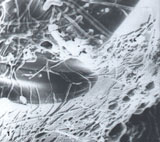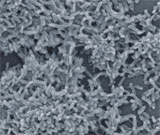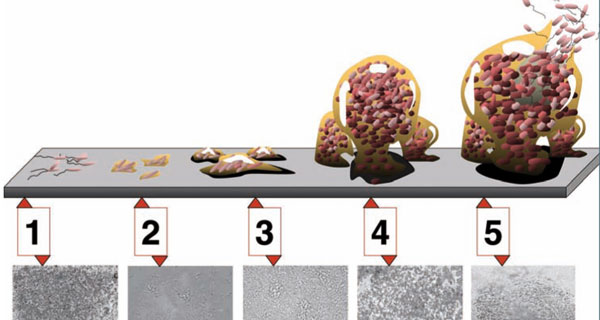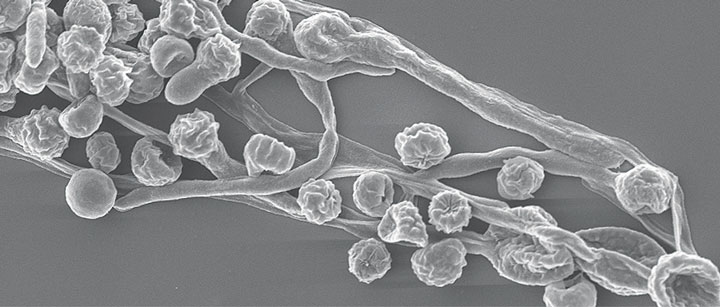Microorganisms on surfaces occur widely in nature. Bacteria, fungi and algae have adapted to growth on various surfaces and benefit considerably from this way of life, which is adapted to each particular location, for example on stones in a stream, and also in various kinds of piping. Their growth becomes visible to the human eye when biofilms develop excessively. Frequently the microbial growth causes damage to the material or impairs the functioning of technical equipment. If biofilms occur in a hospital clinic, for example on implants, they can cause health problems in human beings. Initially, the development of biofilms begins in a completely harmless way. Individual cells of microorganisms stick to surfaces and reproduce in the moist environment. Many types of bacteria are able to build up a layer of slime, which on the one hand provides them with protection against environmental influences. On the other hand, they enable the organisms to accumulate nutritive substances even from environments that are very low in nutrients.
What are biofilms?
Definition and characterization of biofilms


Biofilms are symbiotic communities of bacteria, fungi or algae that adhere to surfaces and grow there. They are adapted to the particular environment in question and have a higher resistance to environmental conditions than freel-floating cells. The metabolism of individuals organized in biofilms differs from that of planktonic cells.
The characteristic feature of biofilms is that the cells are surrounded by a microbially induced matrix, generally consisting of polysaccharides, which are flushed by an aqueous solution. They may consist of individuals of a single species or of mixed populations of various types of organism (Fig. 1). The microorganisms organized in biofilms make use of the metabolic properties of the other species or their protective mechanisms or metabolize in biofilm cells or cell parts of other microorganisms. The formation of the biofilm depends on and is regulated by genetic factors. Here the formation and the exchange of so-called signal molecules are decisive for the microbial communication.
The example of a biofilm of the species Pseudomonas aeruginosa is represented in a scanning electron microscope image in Fig. 2. The three-dimensional structure of the bacteria cells colonized on a polycarbonate surface is clearly visible.
Formation of biofilms


Biofilm formation takes place in several stages. It is not only dependent on the type of microorganisms and their properties, but is also influenced by the surface properties of the materials to be colonized and the environmental conditions. In addition to the nutrient supply, this also includes water content, temperature or the flow conditions. In the development of a biofilm, the free floating plankton cells attach themselves to a surface. In this still reversible process, Van-der-Waal's forces play a role. In the subsequent development of monolayers and microcolonies, so-called adhesins mediate the first bonds with the material surface. This process is only conditionally reversible. The mucus that permeates and surrounds the biofilm is based on polysaccharides produced by the microorganisms themselves. This structure can not be removed from the surface by rinsing. From the biofilm individual cells are released, which can settle again and form a new biofilm. In biofilms microorganisms can accumulate not only nutrients. They also provide protection to the population against chemical and physical environmental influences such as disinfecting solutions or radiation. If the development of biofilms is to be effectively and sustainably avoided, it is necessary to intervene at a very early stage of biofilm formation or to prevent it from occurring predominantly, for example, by means of appropriate antimicrobial treatment of the surface.
 Fraunhofer Institute for Interfacial Engineering and Biotechnology IGB
Fraunhofer Institute for Interfacial Engineering and Biotechnology IGB